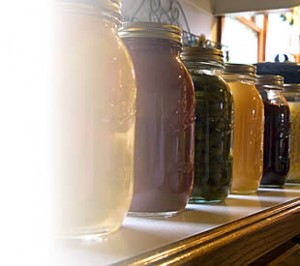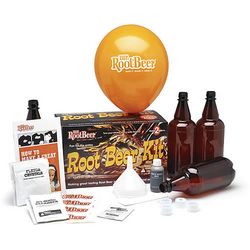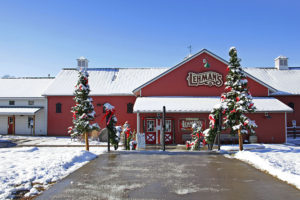It takes April in New England to fully appreciate a good pair of rubber boots. I slogged through the mud and muck yesterday to reach my neighbor’s barn. The reward was well worth the effort. By the door of the milk parlor were 6 ½ gallon jugs of fresh raw milk, the deep yellow cream already rising to the top. I let the jars sit undisturbed for 24 hours and tomorrow I shall skim off the rich cream. The skim milk left behind will be used for yogurt and bread and much will be frozen in two cup measures, the better to add to my baking another day. I like to let my milk ripen at room temperature for a day before I churn it into butter.
Just the word churn conjures up images of backs bent over the kind of old wooden churns now seen as more decorative than utilitarian. For families with a cow in the back yard a large churn is necessary, but for the small batches I make, only a quart or two at a time, a small table top churn like the Kilner works just fine. In fact, using one of these dandy little churns is so much fun I can generally get my daughter and a few of her friends to take over for me. (Remember Tom Sawyer and his fence?)

As always, when working with milk, cleanliness matters. I begin with cream from a farmer I know and trust. I scald all of my equipment in boiling water. The rest is just muscle and patience. I pour the cream into the churn and turn the handle. You want the cream to be at about 60 degrees. If it’s too warm your butter will be too soft and it may not keep well. If the cream is too cold the cutter may never form.
For a while nothing much seems to happen. Then you will notice a change in the texture, a thickening from cream to whipped cream to curdled cream as the liquid and solids separate. Let the butter sit for about 5 minutes and then pour through a sieve. Save the buttermilk. You can drink it iced cold or, as my mother did, poured over cold cornbread and eaten like cereal. It is wonderful for baking, too.
Transfer the butter to a larger colander and knead it well under running water to get out more buttermilk. You can use butter paddles or a wooden spoon or even a couple of forks. It will take about 10 minutes to complete this part.

I add salt to my butter. This is optional. It will help the butter keep better but to be honest, it tastes so good that keeping it so long that spoiling is never a problem.
If you don’t have access to raw milk you can make fine butter with heavy cream from the market.
Happy churning!

































